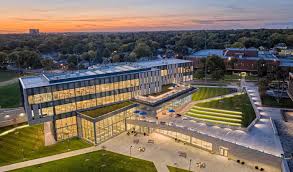Endoscopy is a commonly performed medical procedure used to diagnose and treat conditions affecting the gastrointestinal (GI) tract. The procedure involves using a specialized instrument called an endoscope to visualize the internal organs. Understanding the steps involved in an endoscopy can help ease concerns about the procedure. Additionally, knowing the endoscopy charges in India is essential for planning your healthcare needs. The costs may vary depending on the type of endoscopy, location, and healthcare provider, typically ranging between ₹2,000 and ₹30,000.
This article outlines the detailed steps of an endoscopy, from preparation to recovery, ensuring you’re well-informed about the process.
1. Understanding the Need for Endoscopy
Before scheduling an endoscopy, your doctor will assess your symptoms and medical history. Common reasons for recommending an endoscopy include:
- Persistent abdominal pain
- Chronic heartburn
- Difficulty swallowing
- Unexplained weight loss
- Blood in stool or vomiting
The type of endoscopy, such as upper GI endoscopy or colonoscopy, will depend on the area of concern.
2. Pre-Endoscopy Preparations
a. Consultation and Medical History
During your initial consultation, your doctor will explain the procedure and discuss any medications you’re taking. Certain medications, such as blood thinners, may need to be adjusted.
b. Dietary Restrictions
Patients are typically advised to avoid eating or drinking for 6–8 hours before the procedure to ensure the stomach and intestines are empty.
c. Clear Instructions for Colonoscopy
If undergoing a colonoscopy, you will be asked to take a bowel preparation solution to clean the colon. This is a crucial step to ensure clear visibility during the procedure.
d. Consent Form
Before the procedure, you’ll be required to sign a consent form acknowledging that you understand the risks and benefits of the endoscopy.
3. Arrival at the Healthcare Facility
On the day of the procedure, arrive at the hospital or clinic on time. Ensure you have a family member or friend to accompany you, as sedatives used during the procedure may impair your ability to drive afterward.
a. Check-In
Complete the registration process and provide your medical history and insurance details, if applicable.
b. Pre-Procedure Preparation
- You will be asked to change into a hospital gown.
- Vital signs like blood pressure, pulse, and oxygen levels will be monitored.
- An intravenous (IV) line may be inserted for administering sedatives or anesthesia.
4. Steps During the Endoscopy Procedure
a. Administration of Sedatives
Depending on the type of endoscopy, you may receive:
- Local anesthesia: To numb the throat for an upper GI endoscopy.
- Conscious sedation: To help you relax during the procedure.
- General anesthesia: For more invasive procedures like advanced endoscopic surgeries.
b. Insertion of the Endoscope
- Upper GI Endoscopy: The endoscope, a thin, flexible tube with a camera and light at the tip, is gently inserted through the mouth and guided into the esophagus, stomach, and duodenum.
- Colonoscopy: The endoscope is inserted through the rectum to examine the colon.
c. Visualization and Assessment
The doctor uses the endoscope to examine the internal lining of the GI tract. High-definition images are displayed on a monitor, allowing the doctor to detect abnormalities like ulcers, inflammation, or polyps.
d. Additional Procedures (if needed)
- Biopsy: A small tissue sample may be taken for laboratory analysis.
- Therapeutic Interventions: Issues like bleeding or strictures can be treated during the procedure using specialized tools attached to the endoscope.
5. Post-Endoscopy Recovery
a. Monitoring
After the procedure, you’ll be moved to a recovery area where your vital signs will be monitored as the sedatives wear off. This typically takes 1–2 hours.
b. Discharge Instructions
Your doctor will provide post-procedure guidelines, including dietary recommendations and activity restrictions. Avoid driving or operating machinery for the rest of the day if sedatives were administered.
c. Follow-Up
- Results of the endoscopy, including biopsy findings, will be shared during a follow-up visit.
- Further treatment or tests may be recommended based on the findings.
Factors Influencing Endoscopy Charges in India
The endoscopy charges in India can vary widely based on several factors:
- Type of Endoscopy: Upper GI endoscopy is generally more affordable than advanced procedures like endoscopic ultrasound.
- Location: Urban hospitals in cities like Delhi, Mumbai, and Bangalore typically charge more than facilities in smaller towns.
- Hospital or Clinic: Premium healthcare providers may charge higher fees for endoscopic services.
- Additional Costs: Biopsies, anesthesia, and therapeutic interventions can increase the overall cost.
Conclusion
An endoscopy is a safe and effective procedure that plays a critical role in diagnosing and treating various gastrointestinal conditions. Understanding the steps involved, from preparation to recovery, can help alleviate any anxiety about the process.
Moreover, being informed about the endoscopy test charges in India allows you to plan for the procedure without financial surprises. Always consult with your healthcare provider to ensure you’re choosing the right facility and type of endoscopy for your specific needs.














